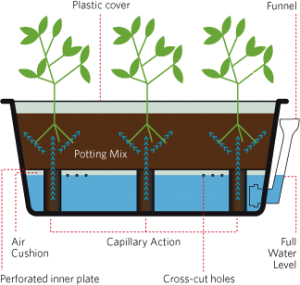Growing courgettes in pots
Courgettes, Zucchini, Bush Marrows
Introduction
Growing courgettes in pots means that summer is on the way. This is a great crop for novice gardeners because courgettes are both easy to grow and very productive. The names zucchini (Italian), courgettes (French) and bush marrows are used interchangeably by gardeners. Today I am going to call them courgettes. A couple of healthy well fertilised courgette plants will provide plenty through the summer.
It is a good idea for growing courgettes in pots in stages. Plant more courgettes a couple of months after the first planting to give a better spread of harvesting. The gold varieties are more resistant to mould and mildew. Blackjack is the most popular green variety.
Conditions for Growing Courgettes in Pots
Growing courgettes in pots with the same conditions as for marrows but pick courgettes when they are immature. In temperate parts of NZ, plant courgettes from September to January. They require soil at 16 deg C and above. In cooler climates this will be from October to December. Plant seeds directly at a depth of 20 mm and they will emerge in 6-10 days. Alternatively you can sow seed under glass from early September.
Fastest germination occurs when the soil is 20+ deg C. You will be able to grow two courgette plants in a large GreenSmart pot so plant 6-8 seeds at a depth of 1.5 cm in the pot .When they have 1-2 true leaves choose the two strongest seedlings to continue growing. When planting seedlings be very careful to avoid root damage during transplanting.
Both male and female flowers appear on the same plant. Encourage bee activity to improve fertilisation of flowers. You can increase yields by hand pollination. The first flowers will be mostly males. Follow these instructions for hand fertilising.. http://www.youtube.com/watch?v=FCVIu82eXGY
GreenSmart pots are an ideal way for the growing courgettes in pots courgettes need free draining conditions. It is best to keep the leaves and stalks as dry as possible to avoid rot and mould. So do all the watering through the water sight glass – this keeps the top layer of soil dry. You can also add pine-needle mulch on the surface. You can also raise the pot up off the ground so leaves are not draped down to ground level. Position the pot where you can do a daily check on the plants as in summer as courgettes can quickly change from a small size to being too large. The plants will end up with a spread of about 1.5 m diameter. During fruiting they use a surprising amount of water.
Fertiliser to use when growing courgettes in pots
Add plenty of organic matter to the potting mix. Eg blood and bone, pelletised sheep manure, Yates Dynamic Lifter. They are heavy nitrogen feeders.
Pests and Disease
Watch for slugs and snails when the plants are small. Courgettes are prone to powdery mildew (light grey powder on leaves) during high humidity. Try a skim milk spray (1 part skim milk to 9 parts water) or 1 tsp of bicarbonate of soda in 600 ml of water.
As plants get older, remove any dead foliage and provide good air circulation. Blossom end rot is indicative of lack of calcium. Use lime.
Companions –
Good companions are corn, melons, pumpkins, lovage, marjoram, and nasturtium.
Harvesting
Picking commences 8-14 weeks after sowing. Harvest regularly to encourage more cropping. Cut the stalk with a sharp knife 1-2 cm from the fruit. Start picking when they are 10-15 cm in length. If they are left too long they will become marrows.
Find out more about GreenSmart pots at the growgoodnz website growgoodnz.co.nz/our-products/
In the Kitchen
As the large yellow flowers are edible, pick off the female flowers while the young courgettes are the size of your little finger. Cooked flowers are a favourite in Mexican kitchens. Here are some recipes for courgette flowers.
www.thekitchn.com/five-ways-to-eat-squash-blosso-87564


Thank you for some great gardening tips
Hi,
How many courgette plants would you fit in a large GreenSmart Pot?
Hi,
I have a couple of courgette plants which are struggling. The flowers have come through and the fruit starts growing but when it reaches about 2 inches long, they turn yellow at the end and then rot.
Any ideas?
Thanks
Jen